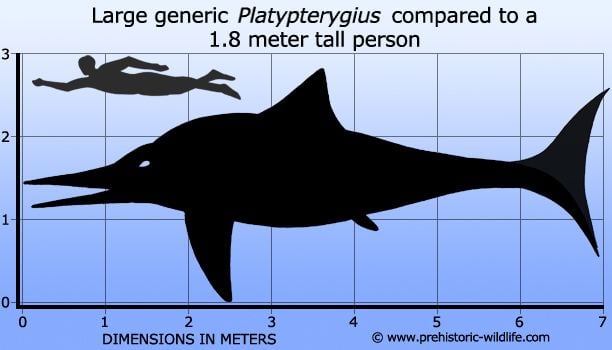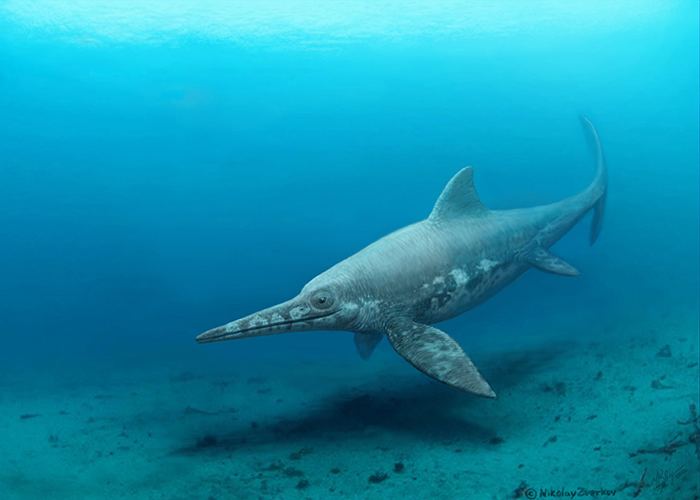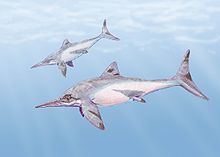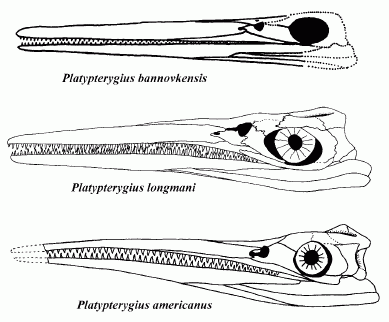Phylum Chordata Order Ichthyosaur | Class Sauropsida Rank Genus | |
 | ||
Similar Ichthyosaur, Ophthalmosauridae, Caypullisaurus, Stenopterygius, Brachypterygius | ||
Platypterygius is an ichthyosaur of the family Ophthalmosauridae. It is most closely related to the genera Caypullisaurus and Brachypterygius.
Contents
- Description
- Discovery and species
- Classification
- Palaeobiology
- Species
- Formerly referred species
- References

Description

Platypterygius reached a length of about 7 m (23 ft). It had a long snout and a powerful finned tail. There are more digits in the front flippers than is usual in ichthyosaurs; they are tightly bound in rows, giving a broad, flat appearance. This unusual characteristic gives the genus its name, meaning 'flat wing.' Furthermore, some of the wrist bones have disappeared entirely. CAT scans on a juvenile specimen strongly suggest that Platypterygius was deaf.
Discovery and species
Fossils are known from Australia, Russia, United States of America, Colombia, southern Patagonia, Western Europe and possibly New Zealand. There are eight named species. Both adults and juveniles have been unearthed, including newborns and pregnant females which indicate that, like other ichthyosaurs, Platypterygius gave live birth.

The remains from Australia were originally called Ichthyosaurus australis. They are from the Toolebuc Formation and Allaru Mudstone (Albian, Lower Cretaceous) of Flinders River and other localities in north central Queensland. In 1990 Wade erected the species name P. longmani to include all remains previously referred to I. australis.
Classification
The cladogram below follows the topology from a 2010 analysis by Patrick S. Druckenmiller and Erin E. Maxwell.
Palaeobiology

P. australis has been found with remains of sea turtles and birds (Nanantius) in its guts. Several species attributed to this genus do indeed appear to be apex predators, specialised to hunting proportionally large prey.
Species

